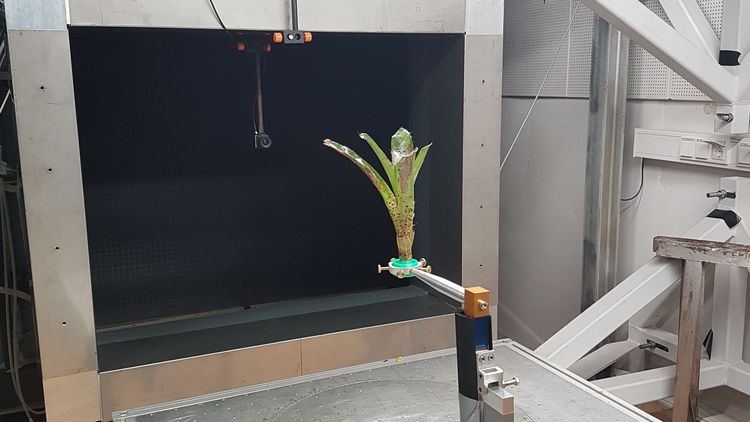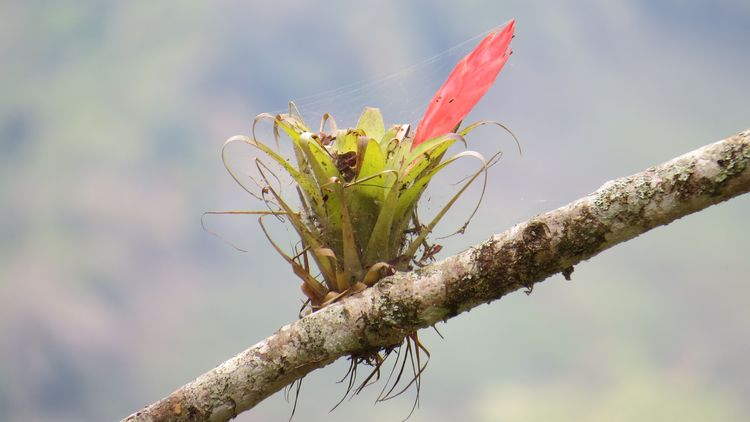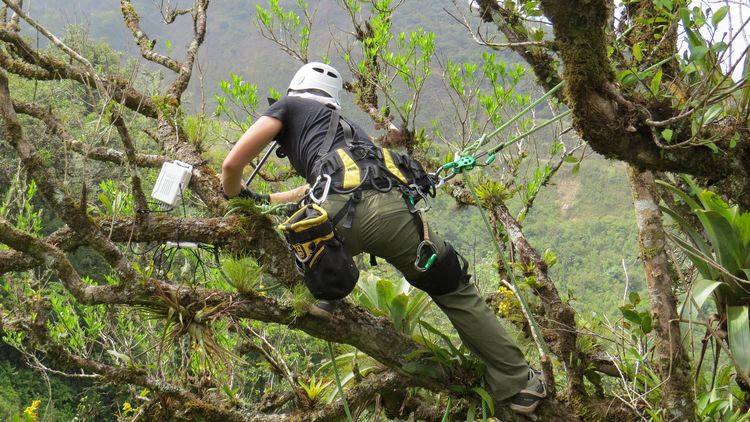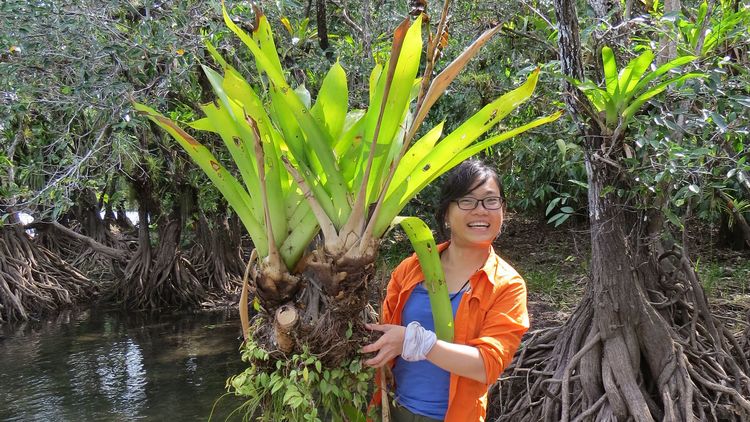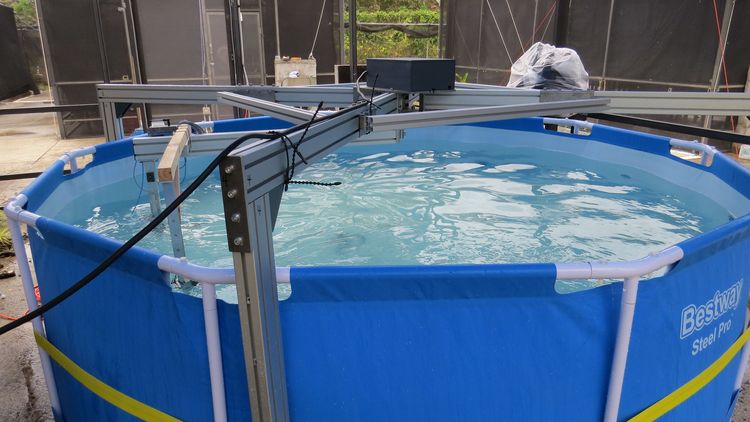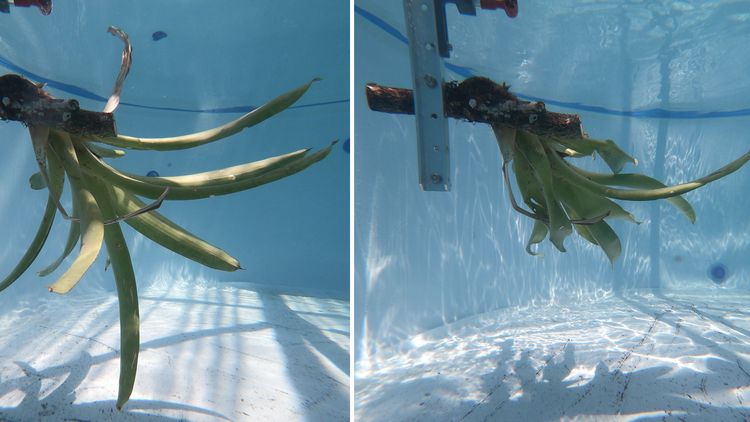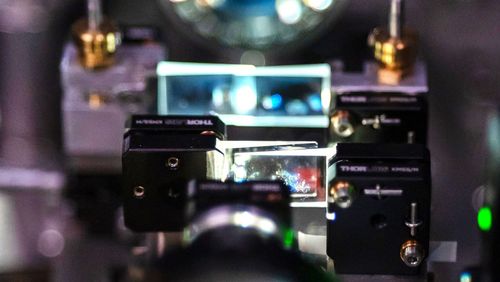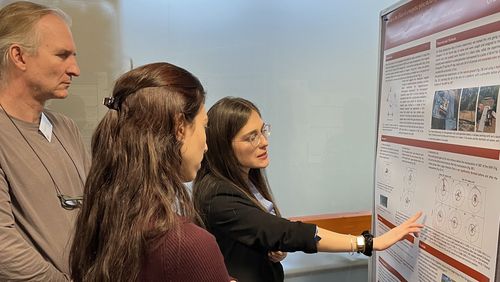What is stronger? The branches of trees in tropical rainforests or the roots of the plants that grow on them? To find out, biologists Helena Einzmann and Jessica Tay conducted experiments in the wind tunnel at the ForWind Centre for Wind Energy Research.
A fully-grown tree in a rainforest is often a magnificent sight – and also home to a variety of plants. Many of the trees in tropical rainforests house lush biological communities on their upper branches – rosette-shaped bromeliads, orchids, and the plants of the arum family with their bizarre flamingo flowers thrive there. The scientific name of these decorative guests is “epiphytes”, but they are commonly known as “air plants”.
These plants attach with astonishing firmness to their host trees, according to the preliminary results of a project at Oldenburg University’s Institute of Biology and Environmental Sciences. "Even hurricane force winds don’t seem to be able to dislodge epiphytes from their substrate. The branches and trees on which they grow are more likely to break," reports Dr. Helena Einzmann, a biologist and post-doctoral researcher in the Institute’s Functional Ecology research group. Einzmann is heading a project called "Epiphytes and Wind in a Changing World" which is funded by the German Research Foundation (DFG).
When only small spots remain from primeval forests
The background to the project is the environmental changes – above all climate change and deforestation – that are having a severe impact on tropical rainforests. When vast jungles are reduced to small patches of forest, the environmental conditions in the treetops change, becoming drier and brighter than in the middle of the rainforest. This has consequences for the epiphytes living there. “Species that require particularly high levels of humidity stop growing there,” explains Einzmann, who studied epiphyte communities outside of forests in her doctoral thesis.
In her current project Einzmann is studying how much of a threat wind poses to these microcosms. Trees that grow on the edge of forests or individually in a field are exposed to strong air currents. In addition, climate models show that tropical storms could become even more severe if global temperatures continue to rise. So together with PhD student Jessica Tay, Einzmann is investigating how much wind force it takes to uproot epiphytes. "Until now it has been unclear what impact wind has on the vital attachment of epiphytes to the host tree," says the researcher.
One focus of the project is a series of unusual experiments which the two researchers carried out in Oldenburg and Panama. “So far we have limited our experiments to bromeliads because they can grow to a very large size. This means that they offer genuine resistance to the wind," says Einzmann. Some of these rosette-shaped plants from the pineapple family can grow to be two or three metres in diameter and weigh several kilogrammes.
Experiments in a wind tunnel
Measuring the forces that the wind exerts on these plants is no easy task. Einzmann and Tay work closely with the Oldenburg physicists Dr. Jaroslaw Puczylowski and Prof. Dr. Joachim Peinke from the Turbulence, Wind Energy and Stochastics (TWiSt) research group, and used the wind tunnel at the ForWind Centre for Wind Energy Research for their experiments.
"There is a formula for determining the force wind exerts on a body," explains Einzmann. A certain coefficient known as the cd value or drag coefficient plays a particularly important role in calculating this resistive force. "This value essentially describes how aerodynamic a body is," says Puczylowski. Drag coefficients are usually determined through experiments – until now primarily on bodies with a rigid geometry.
Bromeliads, however, are bendable and flexible. “They can reduce their surface area and thus reduce the force with which the wind can attack them," Einzmann explains. With the help of the University's mechanical workshops, the team therefore developed a special frame onto which they could attach epiphytes brought from Panama and expose them to air currents with speeds of up to 80 kilometres per hour in the wind tunnel. They were thus able to roughly determine the drag coefficient for various wind speeds and to quantify the elastic deformation of these living objects. The result: exposed to a wind speed of 80 kilometres per hour, bromeliads are able to reduce the drag force acting on them by two-fifths by reconfiguring their leaves.
Epiphytes in a hurricane
To find out how strong a storm would have to be to detach epiphytes from a tree, the team carried out further experiments at the Smithsonian Tropical Research Institute in Panama, with which a research team led by Oldenburg ecologist Prof. Dr. Gerhard Zotz has long maintained close ties. These experiments also required a certain ingenuity. "We initially considered using a kind of leaf blower to blow air against the plants, but its power would not have been sufficient to generate enough force," says Einzmann. So instead, Puczylowski came up with the idea of using water rather than air as the medium for the experiments. Because water has a much higher density, the team was able to exert approximately as much force on the epiphytes at relatively low flow speeds as a Category 3 hurricane.
The University's mechanical and electronic workshops also supported the team by helping it develop a suitable test set-up: the workshop staff built a device that can pull a branch covered in epiphytes in a circle around a round pool filled with water at speeds of up to two metres per second. "That corresponds to a wind speed of 200 kilometres per hour," says Einzmann. The result: even this massive force was not sufficient to dislodge the bromeliads.
In other experiments the researchers tested how epiphytes react to permanent and recurring mechanical stress. To do this, they subjected bromeliads in Oldenburg greenhouses to three different kinds of stress: they used weights to permanently divert the plants from their natural direction of growth; they effected a recurring deflection from the natural growth direction; and they also rotated the substrate in which the bromeliads were rooted by 90 degrees. In a comparison with the control group they found that the plants did not respond to any of these stress factors with enhanced growth.
A firm connection
This means they behave differently than for example trees, which grow stronger on one side when the wind constantly blows from the same direction. "This could be because epiphytes are already so firmly rooted in the substrate that they don’t need any additional supporting structures," says Einzmann. She and Tay are now looking more closely at the roots of epiphytes, and especially the connection between the finest root hairs and the bark of their host tree. Over the next few months the two researchers will focus on how epiphytes manage to attach themselves so firmly to the substrate.
Einzmann has already drawn one preliminary conclusion from the experiments conducted so far: "Wind does not seem to be as relevant as an interference factor as other environmental factors, such as water availability – at least not for bromeliads," she reports. "So wind alone is not enough to pose a threat to an epiphyte community – for that, the entire system must be destroyed. That is, however, only small consolation.”

